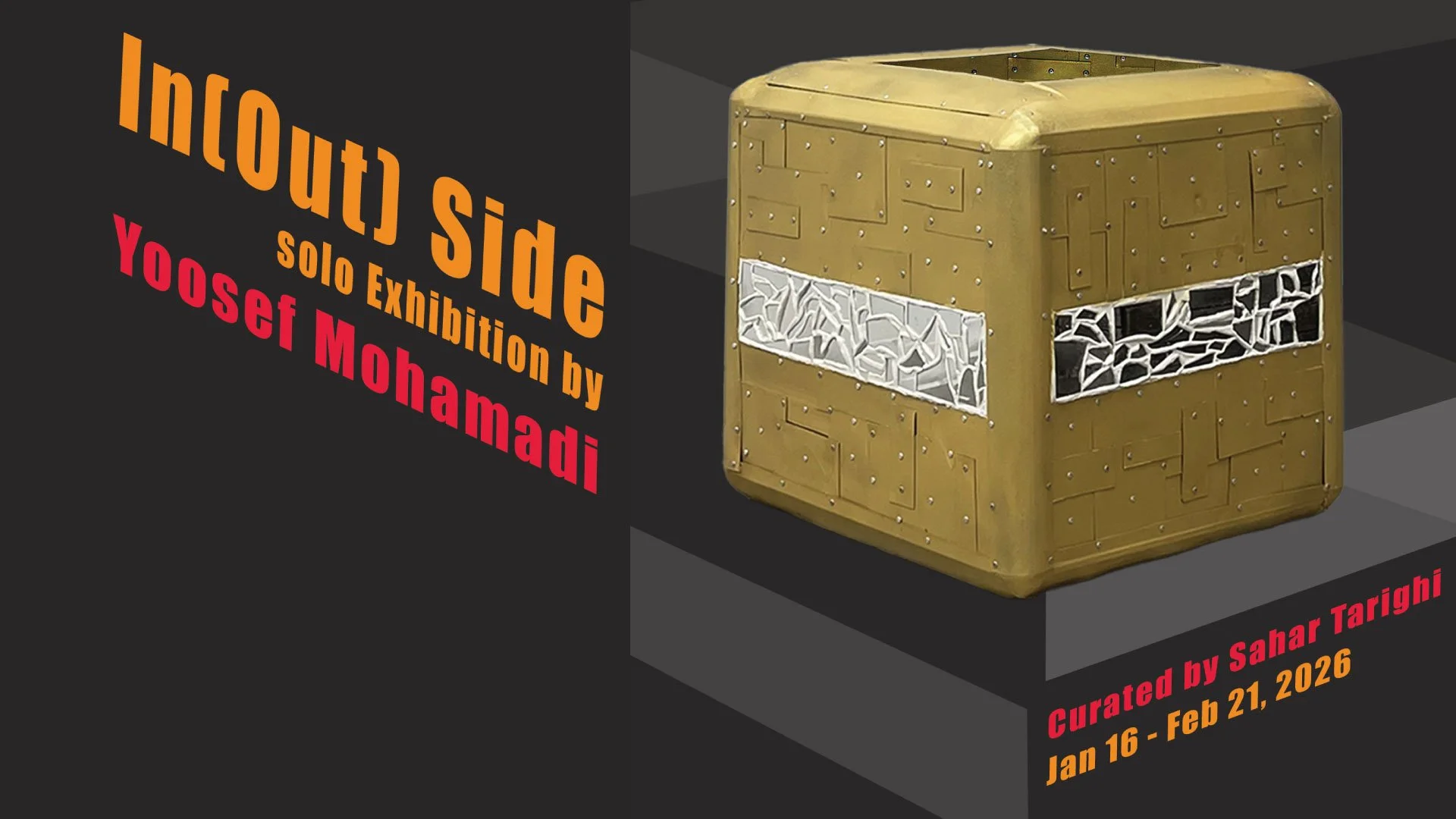Blockfort has invited artist Yoosef Mohamadi for a solo exhibition in the main gallery. Curated by Sahar Tarighi, the exhibition features selected work from the artist. From the curator:
The myth of Pandora has long framed the box as a vessel of paradox: a sealed container that promises safety yet harbors danger, a structure whose opening unleashes both destruction and the fragile trace of hope. What appears as secure enclosure is also a site of repression and rupture. In Yoosef’s exhibition, the box emerges in this same double register—an object that shelters even as it conceals, a form that protects while carrying the threat of collapse.
If Pandora’s box embodies the timeless ambivalence of containment, Michel Foucault frames enclosure as a modern technology of power. “Stones can make people docile and knowable,” he wrote, showing how architecture—walls, cells, gates—functions to classify, discipline, and control. The box, in this sense, is the most distilled architectural unit: at once cell, crate, archive, and border. Yoosef’s recurring square and rectangular forms echo these architectures of violence—shipping containers, humanitarian aid, barricades, and sealed spaces that bear the imprint of power structures, displacement, and erasure.
Yet these boxes are never stable. Through materials such as burlap, plexiglass, sand, and mechanical structures, and through the projection of animation and stop-motion video, Yoosef renders the box fragile, leaky, and unsettled. Surfaces crack, shadows shift, stories seep through the seams. Each work becomes less an instrument of silence than a site of resistance—an archive that refuses to remain closed.
Taken together, the works in this exhibition transform the box from a symbol of containment into a threshold of memory. They reveal that what has been locked away inevitably returns, that silence itself fractures under the pressure of what it seeks to suppress. Between Pandora’s ancient vessel and Foucault’s architectures of discipline, Yoosef’s boxes stage a space where memory persists and where histories speak through rupture. At the same time, his practice draws deeply on personal and collective memory, on the act of storytelling, and on ongoing investigations into displacement and erasure in the context of Kurdistan—where the box becomes not only a form, but a vessel for carrying the lived histories, traumas, and memories that hegemonic discourse seeks to suppress.
Join us on January 16, 2026, 6-8pm for the opening reception.

